Bridging the Divide in Ethiopia’s North
Crisis Group Africa Briefing N°156
Nairobi/Addis Ababa/Brussels, 12 June 2020
What’s new? Tigray and Amhara, the powerhouse regions of northern Ethiopia, are locked in a bitter land dispute exacerbated by national politicking that pits their elites against each other. Given dim prospects for a comprehensive settlement, the dispute could escalate into conflict.
Why does it matter? Ethiopia’s delayed elections will likely be sometime in 2021. Amhara nationalists could stoke sentiment against Tigray’s ruling class during the campaign. Tigray’s government is arming itself as hardliners promote secession. Confrontation between the regions would draw federal military intervention, potentially exposing ethno-regional cracks in the army’s cohesion.
What should be done? Federal leaders should provide incentives to Tigray’s ruling party to come to the table. They should urge Tigrayan and Amhara factions to temper provocative stances and explore compromise. The parties could consider an outcome in which Tigray guarantees political representation and language rights to minority populations in the disputed territories.
I. Overview
Tigray and Amhara, Ethiopia’s two powerful northern regions, are locked in a dangerous standoff. The tensions over Amhara claims to land administered by Tigray sparked proxy violence in 2018 and could do so again given the lack of appetite for compromise. The dispute came into focus in 1991, when Tigrayan rebels seized national power as the heart of a multi-ethnic coalition and, as the Amhara see it, also annexed historical Amhara land to their own region. It remains a flashpoint under Prime Minister Abiy Ahmed, whose ascent was presaged by Amhara protests over the territories and Tigrayan political domination. Federal authorities should convene political, academic and religious leaders from both regions to start healing the rift. Addis Ababa should offer concessions to politically isolated Tigray to come to the table. Both Tigray and Amhara factions should concede ground by dropping hardline stances on the dispute. The regions should instead strike a deal whereby Tigray grants political representation and language rights to native Amharic-speaking communities in the disputed areas.
The dispute between Amhara and Tigray is arguably the bitterest of these contests, fuelled in part by rising ethnic nationalism in both regions.
Ethiopia, Africa’s second most populous country, is undergoing a volatile transition that began in 2015 with widespread anti-government unrest. The Oromo, Ethiopia’s largest ethnic group, drove the protests with their complaints of political and economic marginalisation, but the Amhara, the second largest, also participated, airing similar grievances. The appointment of Abiy, an Oromo, heralded the end of Tigrayan pre-eminence in the Ethiopian People’s Revolutionary Democratic Front (EPRDF), the coalition, now dissolved, that ruled since 1991. It also brought a long-overdue relaxation of repressive measures. But greater freedoms contributed to intensified competition among ethno-regional elites and other factions across the country who are keen to press claims for a fairer share of resources, greater autonomy and an end to perceived injustices.
The dispute between Amhara and Tigray – whose people are bound together by various factors, including the predominant Orthodox Christian religion, language and culture – is arguably the bitterest of these contests, fuelled in part by rising ethnic nationalism in both regions. Neither side looks ready for compromise. This is particularly true of Tigray, which rejects the constitutional legitimacy of a federal boundary commission the central government set up in December 2018 to resolve this and other territorial quarrels. But it also is the case in Amhara, where, in 2016, activists and officials mobilised protesters partly by highlighting their grievances about the disputed territories, lending widespread popular support to the claim that they had been illegitimately annexed.
Tensions have already led to violence. In late 2018, in north-western Amhara, local Amhara killed hundreds and displaced thousands of Qimant, an ethnic minority pursuing greater autonomy within the region, amid regional officials’ claims that Tigray’s ruling party is funding the self-rule campaign. Some senior federal officials fear further escalation. Should that occur, and inter-regional hostility spiral, the national army would likely be pulled into the fray, but how it would handle the situation is a significant question, given Tigrayans’ still heavy presence in the officer corps.
The current political climate poses additional risks. An Amhara nationalist opposition party has emerged to compete with pro-Abiy ruling-party figures in Amhara. As a result, Amhara politicians will likely try to outbid one another in whipping up sentiment against Tigray’s ruling elite during the campaign. For its part, Tigray’s governing party now sits as the only opposition bloc in the federal parliament; meanwhile, its regional government is busy bolstering its own security force, against the backdrop of increasingly determined talk of secession among Tigrayan activists. Recently, Tigray’s ruling party has said it would consider plans to independently hold regional elections, potentially in defiance of the federal government, which has delayed polls set for August due to the COVID-19 outbreak, raising fears of a constitutional crisis as the vote will not be held before the government’s term ends.
In this dangerous climate, federal officials and elders should encourage influential regional actors to eschew provocative stances, so that the two regions’ leaders can hold talks in a more temperate political atmosphere. To kickstart such a process, federal officials should mend ties with Tigray leaders, perhaps first by offering guaranteed representation in federal institutions and involving them fully in discussions about the election delay. Such compromises could nudge Tigray to participate in talks with Amhara.
If the two sides can be brought together, they should focus their energies on finding a compromise solution for the contested areas. Tigray could pledge not to pursue a secessionist course that could inflame Amhara concerns over the disputed territories Tigray would take out of Ethiopia in that scenario. In return, Amhara could ease off irredentist claims over the disputed lands. Were Tigray willing to instead grant political representation and language rights to minority populations in the territories, some Amhara officials have suggested this could help lead to an acceptable outcome. In order to facilitate such a compromise solution, the national boundary commission could devote its efforts to assessing the demographic reality. Because Tigray’s leaders presently distrust the commission, perceiving it as overly deferential to Abiy and Amhara interests, they could request – and federal authorities should agree – that it report exclusively to the upper house of parliament rather than also to the prime minister. Under those conditions, Tigray should have no reason not to cooperate with it.
II. Territory and Violence
The contemporary origins of the Amhara-Tigray dispute lie in the Ethiopian empire’s dismantlement by a socialist junta known as the Derg after the 1974 revolution. A year later, Tigrayans mounted a rebellion, eventually helping topple the military regime in 1991, and forming a new ruling coalition by co-opting elites from other areas including Amhara, the country’s second most populous region.
Resentment runs deep in Amhara and among activists from the disputed areas.
The Amhara claim that the Tigray People’s Liberation Front (TPLF), both then and now Tigray’s ruling party, began to occupy some of their lands during its campaign to depose the Derg. They want these lands returned. Specifically, they assert that the TPLF should return the districts of Welkait, Humera, Tsegede and Tselemte (in Amharic, the last two are Tegede and Telemte) in West Tigray and North West Tigray Zones, as well as the Raya-Akobo area in South Tigray Zone. The Amhara argue that before 1991, the old provinces of Gondar and Wollo, now mostly part of Amhara, administered these chiefly rural districts, some of which produce export-grade sesame. They say the historical south-western border of the old Tigray province was the Tekeze river, which lies well inside Tigray. “It is our historical land”, said a senior federal official from Amhara. “We have to get it back”.
Resentment runs deep in Amhara and among activists from the disputed areas. Many in Amhara complain that their politicians did not speak out against what they perceive as a TPLF land grab in the early 1990s because they were subservient to their Tigrayan coalition partners and remained so until protests broke out in 2016. “They are gangsters”, seethes an Amhara official, in reference to the TPLF. The Amhara not only assert historical ownership of the land but also charge that TPLF rebels killed and uprooted Amhara in the disputed areas, thus altering the demographic balance in favour of Tigrinya speakers and laying the basis for a TPLF claim to the lands under Ethiopia’s ethnic federal system. Welkait activists in Gondar told Crisis Group that when TPLF rebels arrived in the 1980s, they killed and evicted Amhara and took local wives, leading to the demographic shift. “The only solution is returning the districts to their historic province before 1991 and making the TPLF accountable” for abuses it committed, says Achamyeleh Tamiru, an activist who argues that the disputed areas have always been majority-Amhara.
Conversely, most Tigrayans support their region’s claim to the territories on the basis of ethno-linguistic patterns, which are used to form administrative areas in Ethiopia’s federal system. They acknowledge that much of current West Tigray Zone and some of North West Tigray Zone were not part of the old Tigray province, but add that Tigrinya speakers constituted a majority of the population in these areas long before the TPLF’s rebellion began in 1975. Most Tigrayan opposition actors share this position, making any putative concession to the Amhara politically costly. A senior Tigrayan opposition leader, who explained that Welkait was inhabited predominantly by Tigrinya speakers in the 1970s, said: “They [Amhara] think it is easy to grab land. But that is not going to happen. Everyone, including me, would stand up if they try to take it by force”.
At the same time, Tigrayan political dynamics are raising the stakes for the Amhara. As the TPLF has lost its grip on the federal government, some Tigrayan groups have gone as far as to support Tigray’s secession from the federation, which the constitution expressly permits. If Tigray seceded, it would take the disputed territories out of Ethiopia, a prospect Amhara might well resist with force.
The dispute has mainly translated into a proxy conflict between the Amhara and Qimant.
Tigray leaders also accuse federal authorities of siding with Amhara in the dispute. They charge the central government with supporting the Amhara claims by creating the federal boundary commission – which they describe as unconstitutional – to look into inter-regional disputes. They were outraged at the displacement of Tigrayans from Amhara’s Gondar area during protests in 2016, as they are today by what they see as the federal government’s lethargy in clearing Amhara protesters who since 2018 have blocked the main road from the capital Addis Ababa to Tigray’s regional capital Mekelle, the key transport corridor into Tigray. The TPLF views the blockade as the Amhara activists’ attempt to pressure Mekelle into altering its stance on the territorial dispute.
So far, the dispute has mainly translated into a proxy conflict between the Amhara and Qimant, an ethnic minority community who were formerly widespread but now reside only in patches of north-western Amhara, and who are believed by many Amhara to be backed by the TPLF. The Qimant have been agitating for an autonomous zone within Amhara for a decade, a claim based on Ethiopia’s constitution that grants self-determination rights to ethnic communities. In 2017, following referendums and bouts of Amhara-Qimant violence, Amhara authorities granted self-rule by authorising the formation of an administrative zone based on 69 Qimant village districts. But Qimant campaigners demanded that the zone also include three Qimant-majority village areas near the Sudan border but discontiguous with the designated districts. Partly because of local Amhara opposition, the Qimant zone has not been formed, and there is increasing Amhara impatience with Qimant activism. Senior Amhara officials are among those who believe that the TPLF runs the Qimant autonomy campaign.
The violence among Amhara, Qimant and Tigrayans drew in the national military, leading local Amhara to accuse some units of siding with the latter two groups against them.
In the final quarter of 2018, displaced Qimant say, Amhara groups attacked them in villages where they were a minority, forcing them to flee to Qimant-dominated enclaves. Amhara officials acknowledge the attacks but claim that they came in retaliation for Qimant banditry and militia hit-and-run operations. An Amhara administrator admitted that Amhara assailants killed more than 200 Qimant, destroyed 3,398 houses and displaced 26,346 from villages and towns, including fired civil servants. “We tried, but we couldn’t stop it”, he said. UN reports corroborate the scale of the violence. These attacks were paralleled by mostly Amhara groups chasing Tigrayan traders out of the Metemma area bordering Sudan.
The violence among Amhara, Qimant and Tigrayans drew in the national military, leading local Amhara to accuse some units of siding with the latter two groups against them. In January 2019, soldiers killed eight Amhara civilians in Genda Wuha town near Metemma. The Amhara were trying to prevent the military from evacuating a Tigrayan-owned construction company; they said the firm was providing Qimant activists with logistical support. Qimant sources said the military’s intervention saved the construction workers’ lives and their own. A 27-year-old displaced Qimant civil servant in Meka village told Crisis Group: “The only reason that all the Qimant have not been killed is the army”. After the Genda Wuha incident, army units in the area, believed by locals to be pro-TPLF, were replaced by another division.
There was at least one other major violent incident in Metemma around the same time. In late May 2020, Amnesty International reported that on 10-11 January 2019 local Amhara officials and militiamen killed at least 58 Qimant people in the area.
While the violence has subsided in recent months, the situation remains volatile. In October 2019, assailants reportedly from Amhara and disguised as shepherds staged a cross-border attack on Tigrayan militia, killing several in an isolated incident. The May 2020 Amnesty International report contains accounts of fatal violence – including Qimant reprisals – in September and October 2019 in the wider Gondar area, although not in the Amhara-Tigray borderlands. Crisis Group visited the Qimant areas to Gondar’s west the next month, finding the occasional torched building but relative calm amid heavy deployments of federal soldiers and regional police. The foreign affairs ministry has said disorder had abated in West and Central Gondar Zones in 2020 after federal and regional security forces created space for community-led peacebuilding.
As yet, there has been no confirmed clash between regional security forces, but renewed violence, either locally sparked or provoked by elites, could draw the federal military in further, at the risk of stretching its cohesion. At worst, some senior Ethiopian politicians warn, such a scenario could lead to “war”, pitting the Tigray region and its supporters in the federal army against the Amhara region and possibly the central government itself. The possibility of conflict increased in May with the TPLF’s claim that it may hold its own regional elections, which earned a warning from Abiy:
Unconstitutional attempts to undertake illegal elections will result in harm to the country and the people. Therefore, the government will be forced to take any measures to assure the safety of the people and the country.
III. Protests, Politics and Polarisation
Both Amhara and Tigray regions experienced major upheaval when protests swept the country from 2015 onward against a regime many Ethiopians considered repressive and dominated by the TPLF. In 2018, Amhara and Oromo ruling coalition members outmanoeuvred Tigrayans to hand the prime minister’s post to the new leader of Oromia’s regional party, Abiy Ahmed. Tensions rose as Abiy embarked on far-reaching reforms, continuing to release political prisoners, dismissing many senior TPLF figures from federal institutions and, the following year, transforming the EPRDF coalition into his own new Prosperity Party. The last move in particular disturbed the TPLF, which had founded the EPRDF in 1989 and controlled it ever since.
Amid the national turmoil, political elites in the two regions, keen to press for political advantage or mobilise ethno-nationalist sentiment ahead of the now-postponed elections that were scheduled for 29 August, have adopted increasingly hardline stances toward each other. The frosty relationship between the TPLF and Abiy has also put on ice the prime minister’s high-profile 2018 peace deal with Eritrea, which shares a long border with Tigray, whose elites are hostile to President Isaias Afwerki.
A. Amhara Nationalism
Tensions fuelling the Amhara-Tigray standoff ramped up in July 2016 when crowds in Gondar demonstrated against TPLF control of the disputed territories. The protests appeared to be backed by Amhara’s government and came in response to the arrest of Welkait campaigners for self-rule within the region. Organisers mobilised large numbers in opposition to perceived TPLF dominance in Addis Ababa; this came atop anti-government demonstrations in Oromia that began the previous year. Similar protests, linking the fate of the disputed territories to the broader hostility toward the ruling coalition, occurred sporadically in Amhara region until Abiy’s accession in 2018, occasionally turning violent.
Amid the unrest, in early 2018, federal authorities released figures accused of trying to oust the TPLF-dominated government, including those promoting Amhara irredentism. One of them, Asaminew Tsige, an Amhara brigadier general, had been sentenced to life in prison in 2009 for involvement in a coup plot. He had also called for the end of Tigrayan rule over what he considered Amhara territory. Less than a year after his February 2018 release, Amhara’s ruling party nominated him as regional security chief. He recruited Brigadier General Tefera Mamo, who had been jailed with him in 2009, as head of Amhara special forces.
Another of those released was the chairman of the Welkait group that helped mobilise the Gondar protests, Colonel Demeke Zewdu; his arrest had provoked the killing by him or his loyalists of several federal security personnel when they tried to detain him in Gondar. Demeke’s amnesty, two months before Abiy took office, angered the beleaguered TPLF. A former Tigrayan intelligence officer alleges that Demeke is now orchestrating violence in border areas, while an Amhara activist said he is leading Amhara resistance to Abiy’s government, Oromo nationalists and the TPLF.
A slew of violent acts with ethnic overtones would soon take place. Asaminew’s rise gave political oxygen to Amhara nationalists who criticised the TPLF-designed federal system and accused the Amhara elites of complicity. Following his appointment, he began building up Amhara security forces while deploying fierce rhetoric against the TPLF. On 22 June 2019, assassins shot Amhara’s president Ambachew Makonnen and two other regional leaders in the Amhara capital, Bahir Dar. Hours later, in Addis Ababa, a bodyguard killed the military chief of staff, who hailed from Tigray, allegedly on Asaminew’s behalf, according to federal officials. Security forces caught up with Asaminew a day later and killed him.
The deadly attacks led to competing accusations. The federal government blamed Asaminew for planning the assassinations. A November federal investigation concluded that Asaminew had sought to mount a regional coup d’état. Likewise, in July 2019, the TPLF blamed Amhara authorities for the law and order breakdown. The Amhara regional government shot back, with some officials accusing the TPLF of being behind the assassinations. Several Amhara politicians, as well as other government and opposition figures, more broadly suspect the TPLF of seeking to sabotage the transition. “The TPLF sponsors every conflict in Ethiopia”, said a federal minister from Amhara.
Tensions fuelling the Amhara-Tigray standoff ramped up in July 2016 when crowds in Gondar demonstrated against TPLF control of the disputed territories.
Subsequent events further polarised the situation. After the assassinations, the federal government arrested 260 people, including a leader and dozens of members of Amhara’s opposition party, the National Movement of Amhara (NaMA). The ethno-nationalists are a relatively potent political force, even as relations with the authorities are deteriorating. For example, Ambachew’s successor as Amhara president is Temesgen Tiruneh, Abiy’s former national security adviser. He has drawn Amhara nationalist ire for rejecting the notion of using force to resolve territorial disputes. Temesgen’s removal in February of two Amhara hardliners from prominent regional positions further raised tensions. In April, Amhara and federal forces moved against Amhara nationalist community-defence militias known as Fano that had once been part of the 2016-2018 protests supported by Amhara’s government. The offensive involved arrests and killings of Fano militants, further increasing public anger, according to NaMA.
As the country gears up for elections, now slated for 2021, Amhara ethno-nationalists such as NaMA are positioning themselves against rivals in a regional government monopolised by Abiy’s Prosperity Party. Public opposition to the TPLF-installed federal system was on open display in Gondar in late 2019; even upmarket hotels flew the old Ethiopian tricolour rather than the loathed post-1991 flag whose nine-pointed star represents the federation’s semi-autonomous regions. The Prosperity Party, formed in December 2019 as a merger of all regional ruling parties except Tigray’s, may struggle to appeal to hardline ethno-nationalists in Amhara. Jostling among Prosperity Party sub-regional factions ahead of the elections is already visible. The competition could generate instability within Amhara as more combative members vie for prominence within the party.
B. Tigray’s Isolation
Elites from Tigray, which account for some 6 per cent of Ethiopia’s population, have watched in dismay as Abiy has diluted the power they held for over a quarter-century. Tigray leaders accuse Abiy’s government of applying selective justice in prosecuting high-profile members of their ethnic group for graft and rights abuses but not former top officials from other regions, including Amhara, whom they see as equally guilty. They baulked at the release and promotion of Asaminew, whom they saw as more deserving of prosecution than TPLF intelligence officials. The TPLF has not assisted with a federal arrest warrant for former long-time national intelligence chief Getachew Assefa, a TPLF politburo member charged in absentia with overseeing prisoner abuses including torture. The region’s parliament has also rejected the federal boundary commission created in December 2018 to resolve territorial disputes, deeming it unconstitutional.
Options for de-escalation between Tigray and the federal government appear limited unless attitudes shift.
Tigray elites extol their regional security forces’ prowess as well as their loyalists’ clout in the federal army, sowing further suspicion and acrimony among Amhara politicians. As noted, the TPLF was alone among the four regional parties constituting the EPRDF to reject merger into the Prosperity Party, saying the process was illegal and that the party was not adequately consulted. TPLF leaders now say they may hold regional elections in advance of national polls, which would further increase tensions with Abiy’s government. Radical Tigrayan activists go so far as to back the idea of secession, though some TPLF veterans reject this course. It almost certainly would be highly destabilising.
Options for de-escalation between Tigray and the federal government appear limited unless attitudes shift. Reports that the prime minister may have told a meeting of Tigrayan businessmen in December 2019 that the region could face economic sanctions absent greater cooperation with the federal government further soured the atmosphere, as have suggestions the federal government might reduce Tigray’s budget. The February 2020 announcement by TPLF chairman Debretsion Gebremichael that his party and the Prosperity Party had formed a committee to discuss cooperation looked like it could provide an entry point for dialogue, but that has not materialised. The TPLF is likely to maintain its uncooperative stance at least until after the elections, at which point it can be expected to negotiate with the eventual winners at the national and regional levels. Meanwhile, tensions between TPLF and Amhara elites on the one hand, and between Mekelle and Addis Ababa on the other, are likely to persist and could escalate.
C. Eritrea’s Role
Tensions among the TPLF, federal authorities and Amhara have been sharpened by Abiy’s July 2018 rapprochement with neighbouring Eritrea, which shares a long border with Tigray and fought a devastating war with the TPLF-led government between 1998 and 2000 after achieving independence from Ethiopia in 1993. Eritrea’s president, Isaias Afwerki, formerly allied with the TPLF, became its archenemy in the 1990s. He has publicly sided with Abiy, blamed Ethiopia’s internal conflicts on the Tigray party and pointedly criticised ethnic federalism, the system the TPLF was key to instituting. After the détente between the two countries, their main border crossings were opened, but Asmara began closing them before the end of 2018, citing the need to regulate trade and immigration. An Ethiopian opposition figure with close ties to Asmara said Isaias was aiming to suffocate the already ailing Tigrayan economy. A senior leader in Mekelle said:
He [Isaias] was looking to sideline the TPLF by allying with the federal government. It was the TPLF factor that brought them [Abiy and Isaias] together, not the peace (deal) we had already decided (to pursue) as the EPRDF.
Meanwhile, adding to Tigrayan fears of encirclement, Amhara protesters have blocked roads leading south from Tigray to Amhara since at least 2018. Many Tigrayan-registered vehicles, including public transport, now avoid travelling through Amhara for fear of harassment and extortion.
IV. Healing the Rift
The Amhara-Tigray dispute illustrates how Ethiopia’s always contested post-1991 political settlement’s collapse uncorked other dangerous pressures.
With Amhara’s nationalistic politics geared toward redressing perceived inequities and Tigray’s toward protecting its autonomy, there is little imminent prospect of harmonious relations. The problem is exacerbated by jockeying along ethno-regional lines for a greater share of power within federal institutions during a period of flux; the delay of elections due to COVID-19 notwithstanding, forthcoming polls are likely to intensify the competition. The Prosperity Party has replaced a broken coalition but has yet to heal ethno-regional rifts and, in the process, Tigray has become further alienated. Amhara demands for change from a political system they blame for leaving minority Amhara populations stranded and dividing Ethiopians remain unsatisfied. Resolution of the Amhara-Tigray rivalry is unlikely to occur within months. Still, it should be possible to undertake measures to rebuild a modicum of trust between the regions as part of national political discussions that are needed to help shepherd the country through to delayed elections.
The Amhara-Tigray dispute illustrates how Ethiopia’s always contested post-1991 political settlement’s collapse uncorked other dangerous pressures.
The first step should be to renew formal interactions between segments of the Tigrayan and Amhara elites, such as political, business and religious leaders, as well as academics and journalists. The process began last year but fell to the wayside as Oromo-Amhara tensions escalated.
Federal officials should press political leaders to engage in regular dialogue about contentious issues, including the fate of the disputed territories and alleged abuses of native Amharic speakers in Tigray. Civil society groups should bring together influential traditional and social media personalities from both sides to discuss these differences and explore more constructive, peaceful ways to pursue their respective agendas. Participants in these talks should urge Amhara factions to leave roads to and from Tigray unobstructed, and Tigrayans and Tigrayan-registered vehicles unmolested when passing through Amhara. They could likewise encourage Tigray and Amhara media outlets to station reporters in Bahir Dar and Mekelle, respectively, to ensure that the other party’s perspective is fairly aired.
The issue of contested territories is the most sensitive, but it cannot be addressed in isolation. The TPLF’s uncompromising position on the matter is, in part, a reflection of Tigrayans’ broader sense of political marginalisation; assuaging their fears would be a way to induce greater flexibility. The Prosperity Party and TPLF ought to repurpose their joint committee toward that end. The TPLF – as the founder and pre-eminent party in the EPRDF throughout its quarter-century in power – could apologise for its officials’ role in overseeing past repression and pledge to cooperate in both the political transition and the Eritrea peace process. In turn, the Prosperity Party could agree to a fair representation of Tigrayan officials within federal institutions, even if the regional ruling party does not participate in the national governing coalition. The federal government could also do more to ease prosecutions of some former Tigrayan officials by instead addressing allegations against them as part of a national reconciliation process that needs revitalising.
Such confidence-building measures could make it likelier for the TPLF to enter discussions with Amhara and reach compromises on the question of disputed territories. Once the parties get to the table, as part of reciprocal moves, Tigray’s leaders should reassure Amhara that they will not pursue secession. For their part, the Amhara could shift their campaign concerning the disputed areas away from irredentist narratives. Instead, they could press for political representation and language rights for those minorities within Tigray, which the TPLF has already promised for pockets of native Amharic speakers in Waja in South Tigray Zone and Tsegede district in the west. Similar action could be taken by authorities in Oromia and Benishangul-Gumuz regions, where Amhara have similar concerns. A top adviser to Amhara’s president said in May that pursuing minority rights could be fruitful:
Amhara people do not insist on the return of territory into this region as such. … The general population’s issue is not territorial occupation but the people who are Amharic-speaking and Amhara who are forced to speak Tigrinya, forced into Tigrinya schools, deprived of identity. That is what has exacerbated the problem.
The national boundary commission could facilitate this dialogue by providing the parties with information on the disputed territories’ current and former demographics. Rather than Tigray simply rejecting the commission as unconstitutional, it could call for the body to focus on assessing the territories’ demography and detailing the views of current and former residents. Since Tigray does not trust the commission as it is currently set up, it could also request that the body report solely to the House of Federation, parliament’s upper chamber, and not to the prime minister. Federal authorities should agree to these requests if they are made, which would leave Tigray with no reason not to cooperate with it. If it embraced this work, the commission would also help reassure disgruntled Amhara activists and officials that it can still perform a useful role.
V. Conclusion
Leading Ethiopian officials worry that rivalry between the two regions could spark wider confrontation. While violence so far has been fairly confined, omens are troubling.
Although the constitutional debate surrounding delayed elections has taken centre stage, the thorny Amhara-Tigray dispute remains a major political challenge. Leading Ethiopian officials worry that rivalry between the two regions could spark wider confrontation. While violence so far has been fairly confined, omens are troubling. Broader escalation is possible, especially in advance of elections, when Amhara nationalists jockey for power, the TPLF continues to defy central authority and Tigrayan hardliners flirt with secessionism. The fallout could be dangerous, opening fault lines far from the Amhara-Tigray border and, perhaps, undermining the national army’s cohesion. Tensions could also affect the progress of Ethiopia’s rapprochement with Eritrea. Full resolution of the Amhara-Tigray dispute is unlikely in the short term, but leaders at the federal and regional levels should seek to make the most of opportunities for de-escalation. The alternative is to let burn a fire that, at some point, could become a major conflagration.
Source: https://www.crisisgroup.org/africa/horn-africa/ethiopia/b156-bridging-divide-ethiopias-north

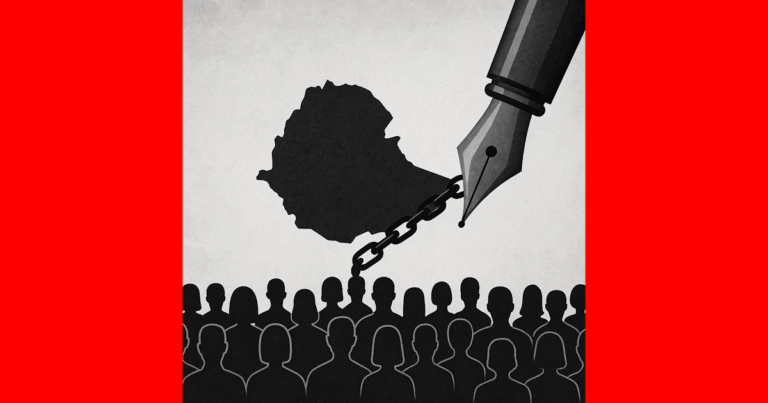
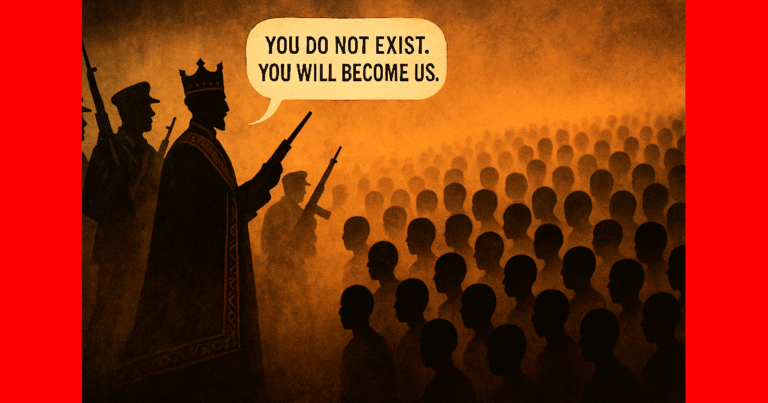
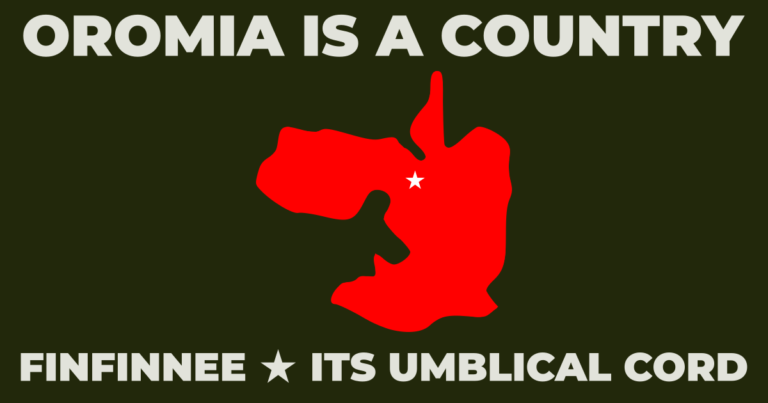
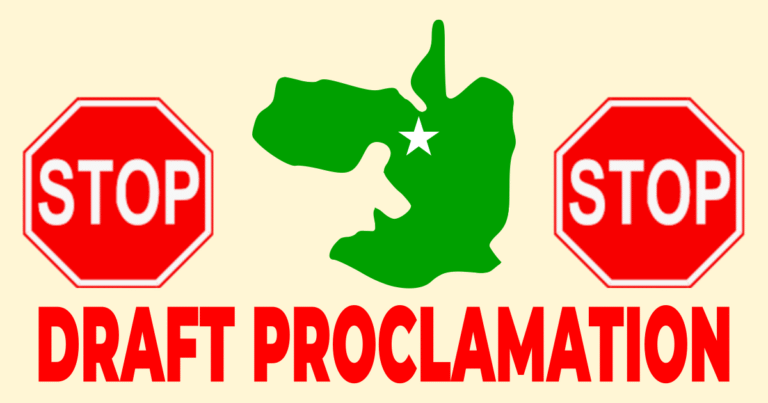
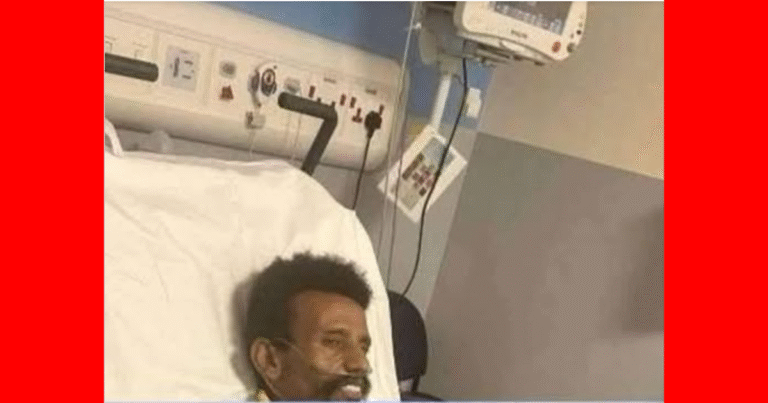
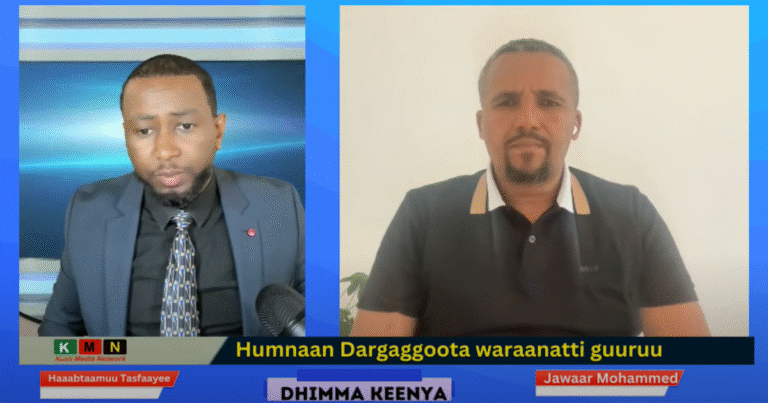
503333 945601I saw two other comparable posts although yours was the most beneficial so a whole lot 135126